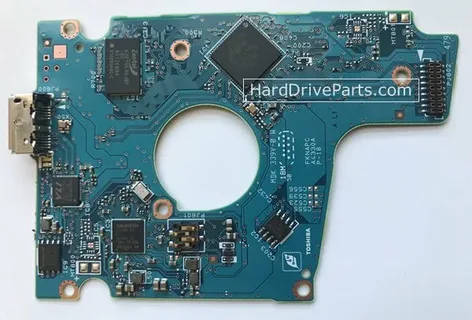Hard drives are essential components of our computers, storing everything from system files to cherished memories. But when a hard drive fails, it can lead to panic—especially if important data is at stake. One possible fix is replacing the Printed Circuit Board (PCB). In this guide, we’ll explore the process of DIY hard drive PCB replacement, along with the tools you’ll need, helpful tips, and the risks involved.
What Is a Hard Drive PCB?
The PCB, or Printed Circuit Board, is the green (or sometimes blue) board attached to the underside of a hard drive. It acts as the drive’s control center, managing communication between the drive and the computer. If this board fails, the drive may not spin up or be recognized by the system. In such cases, DIY hard drive PCB replacement may seem like a cost-effective solution.
Tools Required for PCB Replacement
Before you begin, you’ll need the following tools and equipment:
- A matching donor PCB (ideally from an identical drive model, firmware, and manufacturing date)
- Precision screwdriver set
- Anti-static wrist strap
- Multimeter (for testing components)
- Soldering iron (if transferring ROM chips)
- Magnifying glass or digital microscope (optional but helpful)
Matching the PCB isn’t just about getting one from the same model—it often requires a close match in board number and firmware version.
Steps and Tips for a Successful Replacement
1. Diagnose the Issue First
Make sure the PCB is the actual problem. If the drive is making unusual noises (clicking, grinding), the issue is likely mechanical—not electrical—and a PCB swap won’t help.
2. Find the Right Donor Board
The donor PCB must be nearly identical to your original. Compare:
- Model number
- Board number (usually printed on the PCB)
- Firmware version
- ROM chip placement
3. Transfer the ROM Chip
Many modern drives store unique calibration data on the ROM chip. If this chip isn’t transferred to the donor board, the drive may still not work. This process involves careful soldering, so practice on a junk board first if you’re new.
4. Install the Replacement PCB
Once the ROM chip is transferred, install the new PCB onto the drive. Connect it to your computer and test if the drive is recognized.
5. Data Recovery (Optional)
If your goal is data recovery, copy your files immediately. Using the drive long-term after a DIY fix is not recommended.
Risks of DIY Hard Drive PCB Replacement
While it can be rewarding, DIY hard drive PCB replacement is not without risks:
- Data loss: Incorrect ROM transfer or electrostatic damage can permanently brick the drive.
- Time-consuming: Finding a compatible donor board and replacing the chip is tedious.
- Void warranty: If your drive is still under warranty, this process will likely void it.
- No guarantee of success: Even with perfect execution, success is not certain.
When to Seek Professional Help
If your data is mission-critical or you’re unsure about your skills, it’s safer to contact a professional data recovery service. These services have tools and cleanrooms that reduce the risk of data loss.
Final Thoughts
DIY hard drive PCB replacement can be a viable option for tech-savvy individuals willing to take on the challenge. With the right tools, proper research, and a bit of patience, it’s possible to breathe new life into a failed hard drive. Just remember: the risks are real, so proceed with caution.


